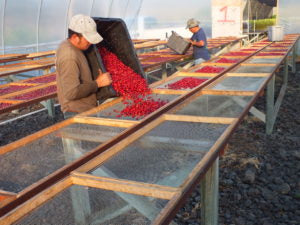Great Coffee - Bad Water
Water quality is critical to the taste of brewed coffee. Ninety-eight percent of a cup of coffee is water. Great coffee demands great water.
Good coffee is often ruined by poor water. Restaurants, vending machines, company break rooms, hospitals, and hotels are typical examples of places where poor water destroys good coffee. One of the worst examples is airplane coffee. Water for airplanes is poured from municipal taps into wheeled storage tanks, that sit on the ramp waiting for the next plane. Workers pump the water out of the storage tanks into airplane tanks. The storage tanks, the hoses and the airplane tanks are rarely, if ever, cleaned, or sanitized. Over time, they build up mold and fungus, When the flight attendant turns on the coffee brewer, the mold and fungus are sucked into the brew basket. .
Perfect Coffee Brewing Water
The Specialty Coffee Association of America recommends brewing coffee in water that contains 150 parts/millions of total dissolved solids (TDS), 5 grains hardness and a pH close to 7. Water for coffee needs some hard metal ions to attract the flavor ions in the coffee grounds.
Tap Water
All drinking water has some minerals and chemicals. Some of those compounds are positive and add to the refreshing taste. However, there are as many as 315 different mineral and chemical compounds distributed by city water companies, not all of them good for coffee brewing. Because municipalities use multiple water sources, coffee that tastes great one day may taste entirely different after a heavy rainstorm.
All municipal water systems use chlorine to kill bacteria. Chlorine is an oxidizer which reacts with the flavor oils in coffee. Using tap water for specialty coffee is a waste of good coffee.
Distilled Water
With all the chemicals that could be in drinking water, it is tempting to just use distilled water. Supermarkets sell bottled distilled water, purified water, and demineralized water. At home, some water systems use distillers to boil water and then re-condense the steam. Distilled water eliminates bacteria, organic solids and metallic ions such as cadmium, chromium, copper, lead and mercury, arsenic, barium, fluoride, selenium and sodium. The result is pure H2O which becomes mildly acidic when it picks up carbon dioxide from the air.
There are three problems with distilled water 1) distilled water is acidic, 2) it doesn’t contain metallic ions which are necessary to extract flavor from the coffee grounds and 3) it doesn’t contain dissolved oxygen which enhances coffee flavor.
Water Softeners
Many homes have built-in water softener systems Water softeners remove metallic ions such as calcium, magnesium, and barium. Through ion exchange, minerals in the water are replaced with sodium. Good coffee needs metallic ions to bond with the flavor molecules in the coffee grounds. Water from water softeners is not a good choice for specialty coffee brewing.
Reverse Osmosis
Some homes have reverse osmosis (RO) filters for drinking water. RO filters eliminate most contaminants, including germs, cadmium, copper, lead, mercury, arsenic, barium, nitrate/nitrite, perchlorate and selenium. For coffee brewing, RO water has the same problems as distilled water.
Home Water Filters
If you use a water filter, make sure that it is designed for brewing drip coffee. Also, make sure it is a high-end filter that takes out contaminations that will inhibit the flavor of your coffee.
If you do not have an artesian spring with perfect brewing water in your back yard, you need to use either bottled drinking water or a high-end in-line filter.
Bon appétit

